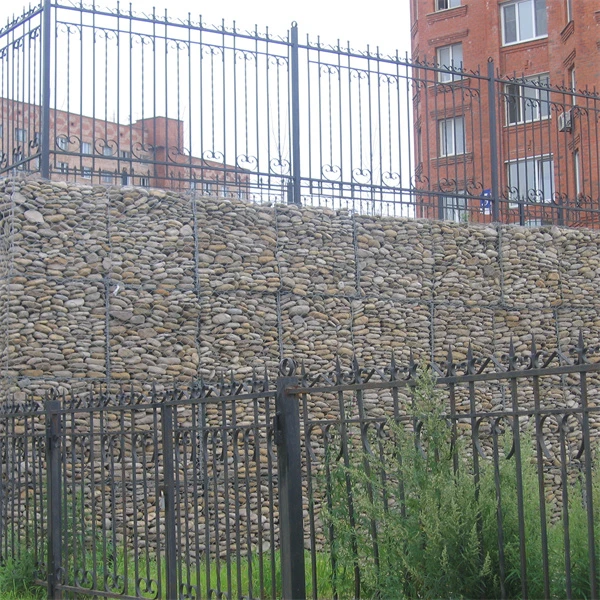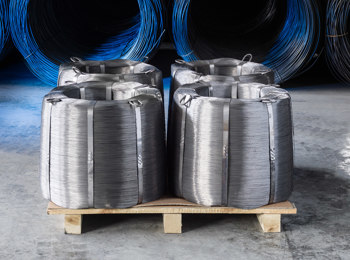Июл . 05, 2025 05:37 Back to list
High-Quality Stone Cage Net Leading Stone Cage Net Suppliers & Factories
- Introduction: Understanding Stone Cage Net Solutions
- Technical Advantages and Performance Metrics of Stone Cage Net
- Comparative Analysis: Stone Cage Net Suppliers vs. Factories
- Customization Options and Manufacturing Innovation
- Case Studies: Real-life Applications and Outcomes
- Market Trends and Statistical Insights
- Conclusion: Choosing the Best Stone Cage Net Solution

(stone cage net)
Introduction: Exploring the Value of Stone Cage Net
In the realm of civil engineering and landscaping, the stone cage net
has become a pivotal solution for soil retention, erosion control, and decorative boundaries. These mesh cages, often known as gabions, are engineered to withstand harsh environmental conditions while offering significant flexibility in various infrastructural projects. Their effectiveness is rooted in their simplicity: robust galvanized or PVC-coated steel wire is crafted into a cage, which is then filled with stones or similar materials, forming a durable yet permeable structure. The emerging demand for stone cage net products demonstrates the growing trend toward sustainable and low-maintenance solutions. As global construction standards evolve, the need for reliable, cost-efficient alternatives like stone cage nets continues to rise, with the global market for gabion structures projected to grow at a CAGR of 6.3% through 2030.
Technical Advantages and Performance Metrics of Modern Stone Cage Nets
Over recent years, advances in metallurgy and manufacturing have considerably improved the performance and lifespan of stone cage nets. High-quality materials, such as heavily galvanized, zinc-aluminum alloyed, or PVC-coated wire, resist corrosion far better than past generations of products. Modern designs boast enhanced tensile strength typically exceeding 380 N/mm². This ensures that even under heavy pressure from earth or water, the structure maintains its integrity.
The permeability of stone cage net assemblies allows natural drainage, preventing hydrostatic buildup and reducing risk of wall failure. Flexible modular construction enables rapid installation and adaptation to uneven terrain, providing superior resilience in areas vulnerable to shifting or settlement. According to field studies, well-installed stone cage net systems can endure compressive loads above 1500 kN/m² and maintain structural function with minimal maintenance for decades. These properties position the product as a reliable solution for challenging projects, from riverbank reinforcement to highway embankments.
Table 1 provides a concise view of key technical specifications for leading stone cage net products:
| Specification | Standard Stone Cage Net | Premium Coated Variant |
|---|---|---|
| Wire Tensile Strength | >350 N/mm² | >380 N/mm² |
| Coating Type | Galvanized | PVC/Zinc-Aluminum Alloy |
| Corrosion Resistance (Salt Spray, hrs) | 350 | 720+ |
| Mesh Opening | 60x80 mm | 80x100 mm |
| Service Life (Years) | 12 | 25 |
Comparative Analysis: Stone Cage Net Suppliers vs. Factories
When sourcing stone cage net products, stakeholders often face the choice between working directly with stone cage net factories and engaging with specialized stone cage net suppliers. Both options offer distinct benefits. Factories, responsible for core production, typically provide competitive pricing, bulk availability, and potential for product customization. Their direct manufacturing oversight ensures strict adherence to quality standards, often complying with ISO 9001 and CE certification.
On the other hand, suppliers often aggregate products from various stone cage net factories, offering customers a wider range of options and logistical support. Top-tier suppliers manage warehousing, streamline delivery, and offer value-added services such as technical consultancy and post-sale support. However, these advantages sometimes come with added cost, reflected in retail markups of 10–15% compared to factory pricing.
Table 2 highlights essential points of contrast between the two sourcing channels:
| Criteria | Stone Cage Net Suppliers | Stone Cage Net Factories |
|---|---|---|
| Pricing | Higher (by 10–15%) | Competitive, direct |
| Product Range | Wide, sourced from multiple origins | Focused, own production lines |
| Customization Flexibility | Limited | High |
| Order Volume Suitability | Small to Mid Scale | Mid to Large Scale/Bulk |
| Quality Control | Dependent on sourcing strategy | Strict, as per manufacturing protocols |
| After-sales Service | Professional, wider network | Factory-direct, technical focus |
Customization Options and Manufacturing Innovation
Recognizing the diversity of field applications, modern stone cage net factories invest in versatile design and production capabilities. Customization is now a cornerstone service, with factories offering variations in mesh aperture, wire gauge, coating thickness, and cage dimensions. For projects facing unique constraints – such as extreme salinity, marine exposure, or seismic activity – tailored solutions are engineered with advanced alloys or composite coatings.
Some factories are integrating up to 15% recycled content in wire production, further lowering carbon footprints. Additionally, robotic mesh weaving and automated welding lines have streamlined production, ensuring higher precision and consistency while reducing human error. Close collaboration between engineers and end-users at the design stage creates opportunities for bespoke configurations that precisely match structural or aesthetic objectives. This commitment to innovation positions leading stone cage net factories as strategic partners for infrastructure and landscaping professionals worldwide.
Case Studies: Real-life Applications and Outcomes
The versatility of stone cage nets is underscored by their diverse range of applications. In 2022, a major European flood protection project utilized over 25,000 m² of stone cage nets to reinforce riverbanks across a 14-kilometer stretch. Within a year of installation, bank erosion was reduced by 82%, and vegetation coverage improved the ecological value of the affected areas by 40%.
Another prominent case involved highway embankment stabilization in North America. Engineers selected premium PVC-coated stone cage nets to secure slopes with inclinations up to 60°. After three years, monitoring data showed zero slippage incidents and maintenance costs were reduced by 35%, compared to traditional retaining concrete walls. In landscaping, stone cage nets have been creatively deployed for urban sound barriers and public art installations, highlighting their architectural and environmental appeal. This adaptability, documented by industry surveys, drives ongoing demand for highly reliable and customizable solutions.
Market Trends and Statistical Insights
The global demand for stone cage net products continues to expand, propelled by regulations for sustainable construction and disaster resilience. Data from market analytics platforms indicate an annual production volume exceeding 2.1 million tons in 2023, with Asia Pacific accounting for nearly 46% of total shipments. Within this region, China leads both in output and export volume, with more than 350 registered stone cage net factories as of last year.
End-user segmentation shows transportation infrastructure (32%), water conservation (27%), and landscaping (19%) as the largest consuming sectors. Innovations such as self-healing coatings and biodegradable composite meshes are forecast to reach the market in the next three years, potentially increasing the average service life by up to 15 years. Such trends encourage stakeholders to continuously upgrade their sourcing criteria, prioritizing factories and suppliers capable of offering certified, future-ready products.
Conclusion: Navigating Stone Cage Net Choices for Maximum Project Value
Selecting the ideal stone cage net solution requires a keen understanding of technical performance, manufacturer reliability, and customizability. Whether partnering directly with advanced stone cage net factories or leveraging the service breadth of accomplished stone cage net suppliers, stakeholders should weigh criteria such as tensile strength, corrosion resistance, certification, and after-sales support. As global needs shift toward sustainability and engineered resilience, investing in innovative, data-backed stone cage net systems ensures long-lasting protection and value across a spectrum of applications.

(stone cage net)
FAQS on stone cage net
Q: What is a stone cage net?
A: A stone cage net is a wire mesh container filled with stones, commonly used for erosion control and landscaping. It is also known as a gabion. The net provides stability and protection to various structures.Q: How do I find reliable stone cage net suppliers?
A: You can locate reliable stone cage net suppliers by searching online directories or trade platforms. Look for suppliers with good customer reviews and certifications. Verifying their experience and past projects is also recommended.Q: What are the benefits of purchasing from stone cage net factories directly?
A: Buying from stone cage net factories ensures better pricing and customization options. You can also be more confident about the product’s quality. Direct communication with the factory speeds up order processing.Q: Can stone cage net factories customize products according to my requirements?
A: Yes, most stone cage net factories offer customization in terms of size, mesh type, and coating. You can discuss your specifications directly with them. This ensures the nets are suitable for your project.Q: What should I consider before choosing a stone cage net supplier?
A: Consider the supplier's reputation, product quality, and after-sales support. Also, compare prices and delivery timelines. Requesting samples or references can help you make a decision.-
Visualizing Gabion 3D Integration in Urban Landscapes with Rendering
NewsJul.23,2025
-
The Design and Sustainability of Gabion Wire Mesh Panels
NewsJul.23,2025
-
The Acoustic Performance of Gabion Sound Barriers in Urban Environments
NewsJul.23,2025
-
Mastering the Installation of Galvanized Gabion Structures
NewsJul.23,2025
-
Gabion Boxes: Pioneering Sustainable Infrastructure Across the Globe
NewsJul.23,2025
-
Custom PVC Coated Gabion Boxes for Aesthetic Excellence
NewsJul.23,2025
-
Installation Tips for Gabion Wire Baskets in Erosion Control Projects
NewsJul.21,2025






